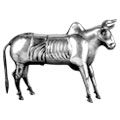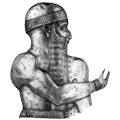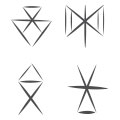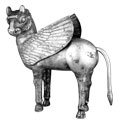Career in Iran
In 1946, while still a student at the University of Tehran, Houshang co-founded an import and export enterprise with his brother Mehdi, called M&H Mahboubian. Two years later Houshang established Tosca Export Company, a business venture that specialised in exporting walnut and oak wood to the veneer production plants in France and Italy. Tosca Export gradually grew into a very successful business.
In 1951, Houshang became a business partner of Dr. Koushan, an acquaintance who had a strong interest in film-making and who had just returned to Iran from his studies in Germany. Together they founded the first film production company in Iran under the name of Pars Film. Soon afterwards, Houshang produced Iran’s first colour film, Gerdab (‘Whirlpool’). Pars Film went on to become a very successful venture and continues to make a vast number of Iranian movies every year.
In 1954, Houshang decided to go into the industrial wood business. In an attempt to respond to the demand for wood in Iran, he bought the Tamishan wood factory, an abandoned project belonging to the Pahlavi Foundation in Mazandaran province, on the southern shores of the Caspian Sea. Soon after taking over the business he carried out extensive remodelling and refurbishing of the factory premises, thus giving the ailing business a new lease of life. The following year, in order to respond to soaring wood consumption in Iran, his venture became fully active in the forest of Bula in the Hezar Jarib region of the Mazandaran province.
From then until 1960, in parallel with his successful business activities, Houshang immersed himself in intense research in the field of art and the history of ancient Iran. In pursuit of his passion for Iranian antiquities, Houshang used his knowledge and expertise to further build his family collections. He would spend most of his income on purchasing ancient artefacts that were on sale on foreign markets as a result of purchases by Western enthusiasts of Iranian art centuries before.
In 1961 Houshang, together with his brother, founded the Mahboubian Gallery in New York. This was an attempt to introduce the art of Iran, before and after Islam, to the West. They exhibited one of the biggest collections of its kind at the University of Texas, Austin in 1970, and later at the Cultural Centre in New York City. These objects were published in their first book, Treasures of Persian Art After Islam.
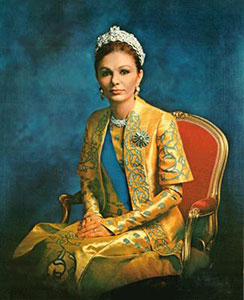 In an attempt to contribute to the cultural burgeoning of Iran in the 1970s, the two brothers, Houshang and Mehdi, were proud to volunteer their services to the special office of HRH Farah Pahlavi, Empress of Iran. In this capacity, the Mahboubians collaborated with HRH’s special office on the national heritage project for the establishment of art museums in Iran. This project was short-lived because of its sudden interruption by the Islamic revolution, but it was nevertheless one of the most significant of its kind in Iran and amongst its achievements was the creation of the famous Reza Abbassi Museum in Tehran.
In an attempt to contribute to the cultural burgeoning of Iran in the 1970s, the two brothers, Houshang and Mehdi, were proud to volunteer their services to the special office of HRH Farah Pahlavi, Empress of Iran. In this capacity, the Mahboubians collaborated with HRH’s special office on the national heritage project for the establishment of art museums in Iran. This project was short-lived because of its sudden interruption by the Islamic revolution, but it was nevertheless one of the most significant of its kind in Iran and amongst its achievements was the creation of the famous Reza Abbassi Museum in Tehran.
For the purposes of progressing with the project, during 1974-75 the Mahboubian brothers transferred one of the largest and most unique Islamic collections assembled from New York to Tehran. It consisted of 2,500 art pieces click here for more info, of which the majority went on a permanent exhibition in the then newly-founded Reza Abbassi Museum.

